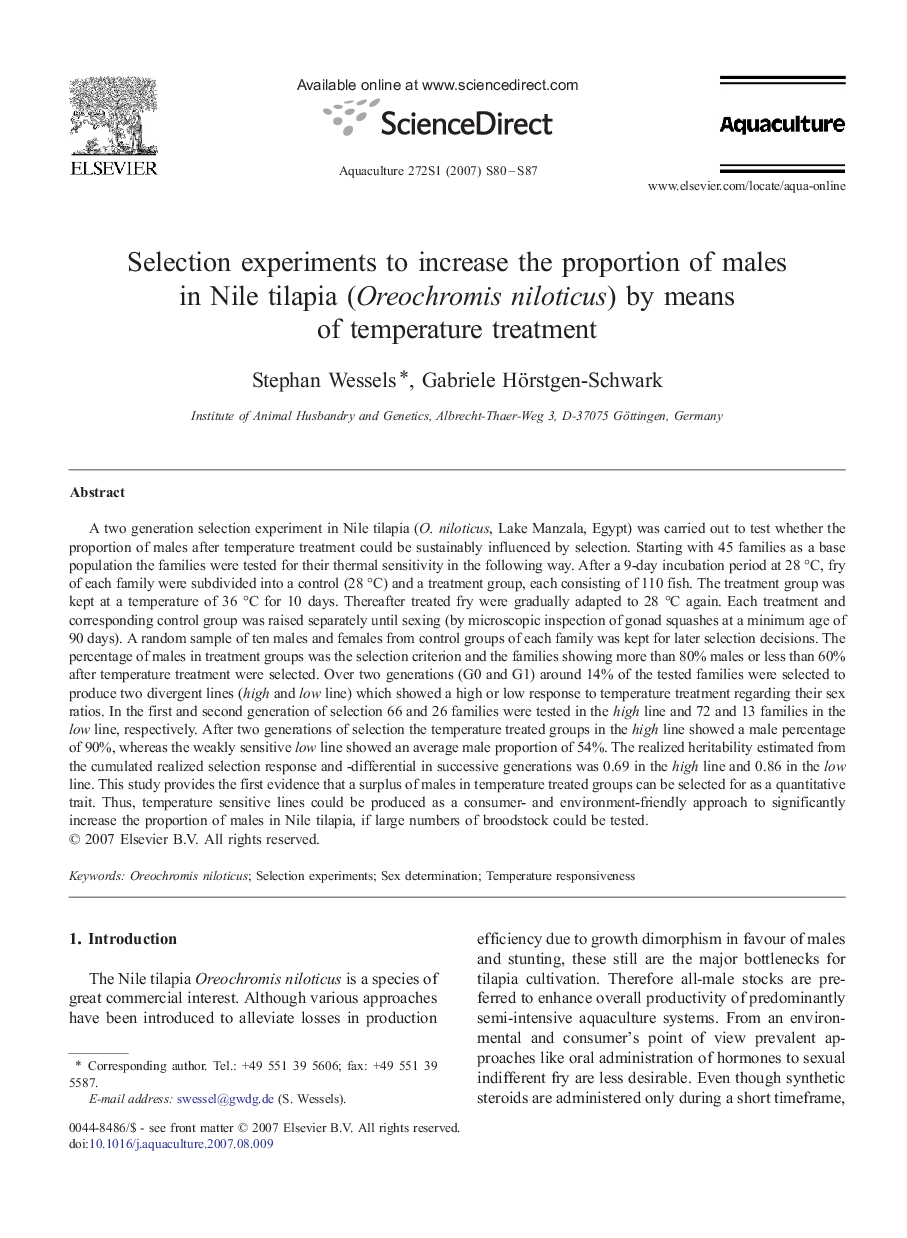| Article ID | Journal | Published Year | Pages | File Type |
|---|---|---|---|---|
| 2424928 | Aquaculture | 2007 | 8 Pages |
A two generation selection experiment in Nile tilapia (O. niloticus, Lake Manzala, Egypt) was carried out to test whether the proportion of males after temperature treatment could be sustainably influenced by selection. Starting with 45 families as a base population the families were tested for their thermal sensitivity in the following way. After a 9-day incubation period at 28 °C, fry of each family were subdivided into a control (28 °C) and a treatment group, each consisting of 110 fish. The treatment group was kept at a temperature of 36 °C for 10 days. Thereafter treated fry were gradually adapted to 28 °C again. Each treatment and corresponding control group was raised separately until sexing (by microscopic inspection of gonad squashes at a minimum age of 90 days). A random sample of ten males and females from control groups of each family was kept for later selection decisions. The percentage of males in treatment groups was the selection criterion and the families showing more than 80% males or less than 60% after temperature treatment were selected. Over two generations (G0 and G1) around 14% of the tested families were selected to produce two divergent lines (high and low line) which showed a high or low response to temperature treatment regarding their sex ratios. In the first and second generation of selection 66 and 26 families were tested in the high line and 72 and 13 families in the low line, respectively. After two generations of selection the temperature treated groups in the high line showed a male percentage of 90%, whereas the weakly sensitive low line showed an average male proportion of 54%. The realized heritability estimated from the cumulated realized selection response and -differential in successive generations was 0.69 in the high line and 0.86 in the low line. This study provides the first evidence that a surplus of males in temperature treated groups can be selected for as a quantitative trait. Thus, temperature sensitive lines could be produced as a consumer- and environment-friendly approach to significantly increase the proportion of males in Nile tilapia, if large numbers of broodstock could be tested.
